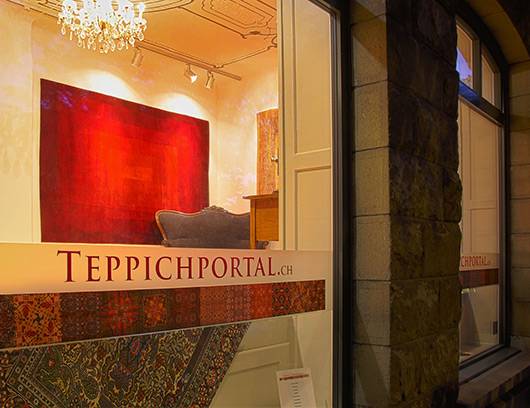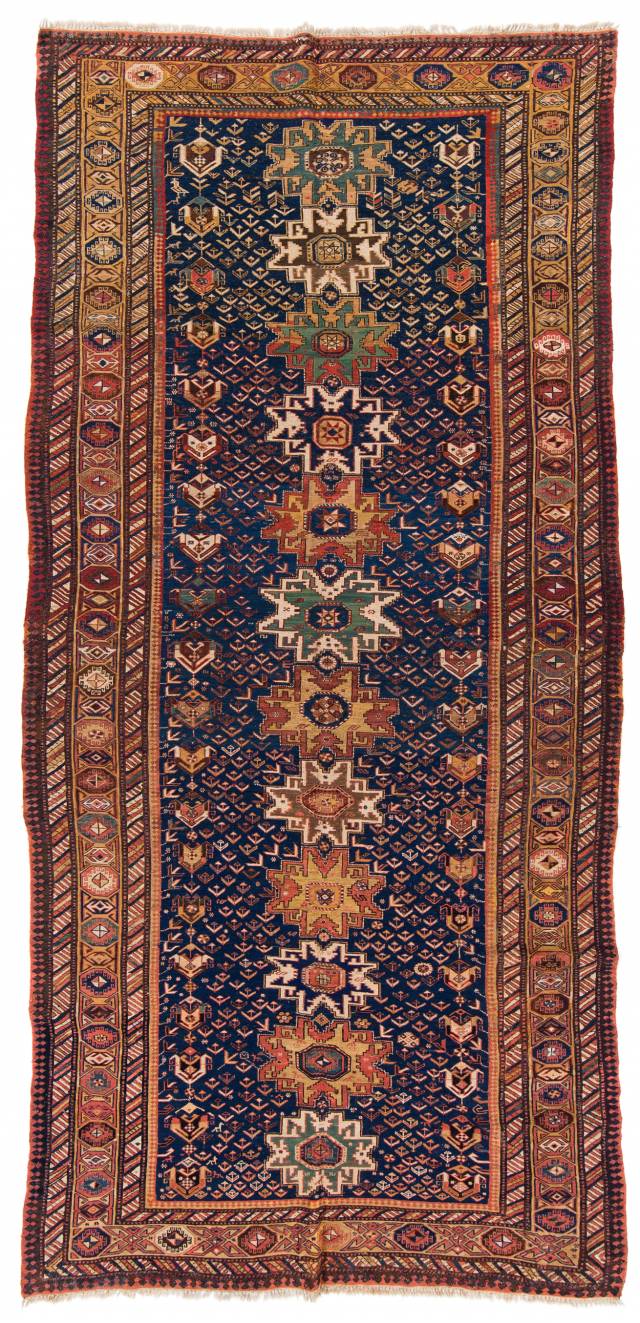Leshgi
Leshgi
While the ‘Lesghi Star’ medallion so strikingly employed as the primary field ornament of this richly-coloured flatweave is frequently encountered in the knotted pile carpets of the east Caucasian region, it is very rarely encountered in surviving nineteenth examples woven in the soumac technique, especially in the early large and elongated format of the present item. A.N. Landreau and W.R. Pickering illustrate a small soumac bagface with a field of Lesghi Stars from the Joseph V. McMullan Collection, now in the Metropolitan Museum of Art New York, as plate 46 in their authoritative work From the Bosporus to Samarkand – Flat-Woven Rugs (The Textile Museum, Washington D.C., 1969), with A. Boralevi including a small soumac with three Lesghi Star medallions as plate 25 in Sumakh –Flat-Woven Carpets of the Caucasus (Firenze, Italy, 1986), and Richard E. Wright illustrating another small Lesghi Star soumac consisting of two joined bagfaces as plate 61 in Rugs and Flatweaves of the Transcaucasus (Pittsburgh PA, 1986). However, examples of related size and design to this item are only, to the best of our knowledge, to be found in the literature among well-known knotted pile works of the eastern Caucasian region such as plates 433 and 435 in Ian Bennett’s Oriental Rugs Volume I – Caucasian (Oriental Textile Press UK, 1981), both of which employ a single vertical row of Lesghi Star medallions against a relatively narrow blue field as here.
Of equal interest to the great rarity of this design among the known large Caucasian soumacs of the nineteenth century is the light the work as a whole sheds on the Lesghi origin. The province of Lesghistan, in the far north eastern corner of the Caucasian weaving region, takes its name from the Lesghi tribe who in the nineteenth century were one of the several tribes who inhabited the fertile east Caucasian plains along the shores of the Caspian Sea. Yet, as many of the knotted pile examples which employ the Lesghi Star design, such as the two published by Bennett, have been attributed by scholars with a degree of confidence – on structural and stylistic grounds – to the best-known and most productive east Caucasian weaving districts of Shirvan and Kuba, the characteristics of an indigenous tribal Lesghi weaving culture have become increasingly mysterious and difficult to identify. The present work, both in its use of the soumac technique and in the distinctly tribal facets of its design and colour, may well provide a much-needed instance of authentic Lesghi craftsmanship. As a soumac, and especially a soumac in the elongated dimensions of the earliest known Caucasian examples in this structure, it is likely to have been created for use within its weaver’s immediate society, unlike the pile carpets of Shirvan and Kuba which were made primarily for sale in the major markets of the Caucasus, and thence for export to Moscow, Persia and Europe. Similarly, its spontaneous variations in colour – as seen most pleasingly in the ever-changing tonal treatment of the Lesghi Star medallions – and the endless variety of scale, proportion and interior embellishment in its design execution, represent unequivocal hallmarks of true nomadic tribal weaving, quite different to the sophisticated precision to be seen in the pile carpets of Kuba and Shirvan, which were created mainly in small workshop environments. Its unadulterated use of natural dyes, and the clarity and radiance of the colours these result in, is additional testimony to a tribal provenance, imbuing the work with a powerful splendour that is seldom seen among other weavings of this era. Combining with the excellence of draughtsmanship, as exhibited notably in the execution of the yellow ground ‘Memling-Gul’ and hooked-diamond main border and the heraldic ascending plant forms which flank the central medallion row of the field, these unique qualities of colour and composition make this an East Caucasian flatweave of the first order, as resonant in its singular decorative achievement as it is rare within the context of its type.











